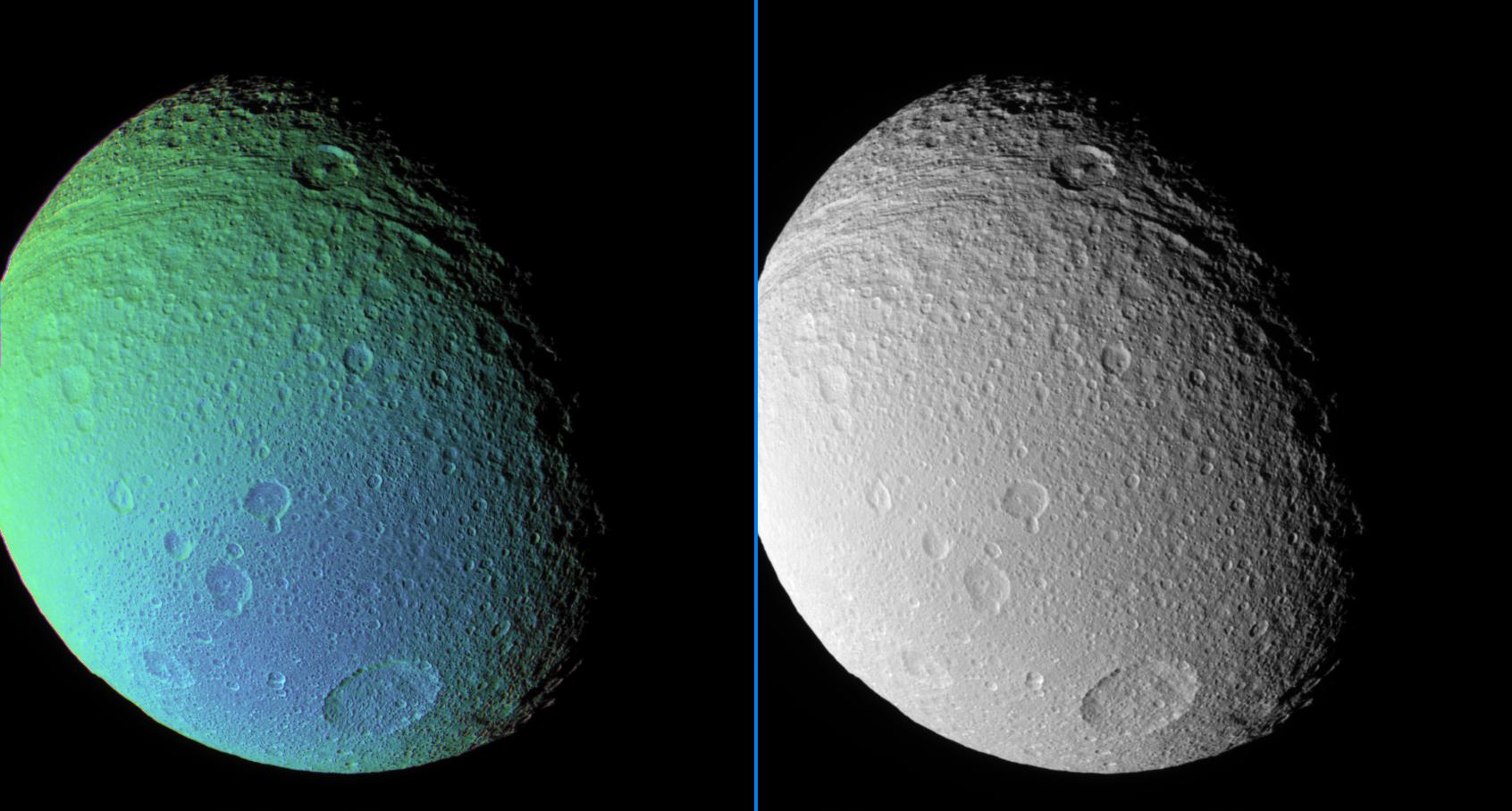Transition on Tethys

| PIA Number | PIA08284 |
|---|---|
| Language |
|
An extreme false-color view of Tethys reveals a surface detail not visible in a monochrome view taken at the same time.
The false-color view shows a color transition from the moon's Saturn-facing side (at left) to a region its trailing side (at bottom).
Near the top of the images, the central-peaked crater Telemachus lies in the deeply grooved terrain that marks the northern reaches of Ithaca Chasma.
To create the false-color view, ultraviolet, green and infrared images were combined into a single picture that isolates and maps regional color differences. This "color map" was then superposed over a clear-filter image that preserves the relative brightness across the body.
The combination of color map and brightness image shows how colors vary across Tethys' surface. The origin of the color differences is not yet understood, but may be caused by subtle differences in the surface composition or the sizes of grains making up the icy surface material.
The monochrome image was taken using a clear filter.
North on Tethys (1,071 kilometers, or 665 miles across) is up and rotated 36 degrees to the right.
The images used to create this view were acquired using the Cassini spacecraft narrow-angle camera on Sept. 9, 2006 at a distance of approximately 221,000 kilometers (137,000 miles) from Tethys and at a Sun-Tethys-spacecraft, or phase, angle of 52 degrees. Image scale is 1 kilometer (4,332 feet) per pixel.
The Cassini-Huygens mission is a cooperative project of NASA, the European Space Agency and the Italian Space Agency. The Jet Propulsion Laboratory, a division of the California Institute of Technology in Pasadena, manages the mission for NASA's Science Mission Directorate, Washington, D.C. The Cassini orbiter and its two onboard cameras were designed, developed and assembled at JPL. The imaging operations center is based at the Space Science Institute in Boulder, Colo.
For more information about the Cassini-Huygens mission visit http://saturn.jpl.nasa.gov . The Cassini imaging team homepage is at http://ciclops.org .
Credit: NASA/JPL/Space Science Institute
